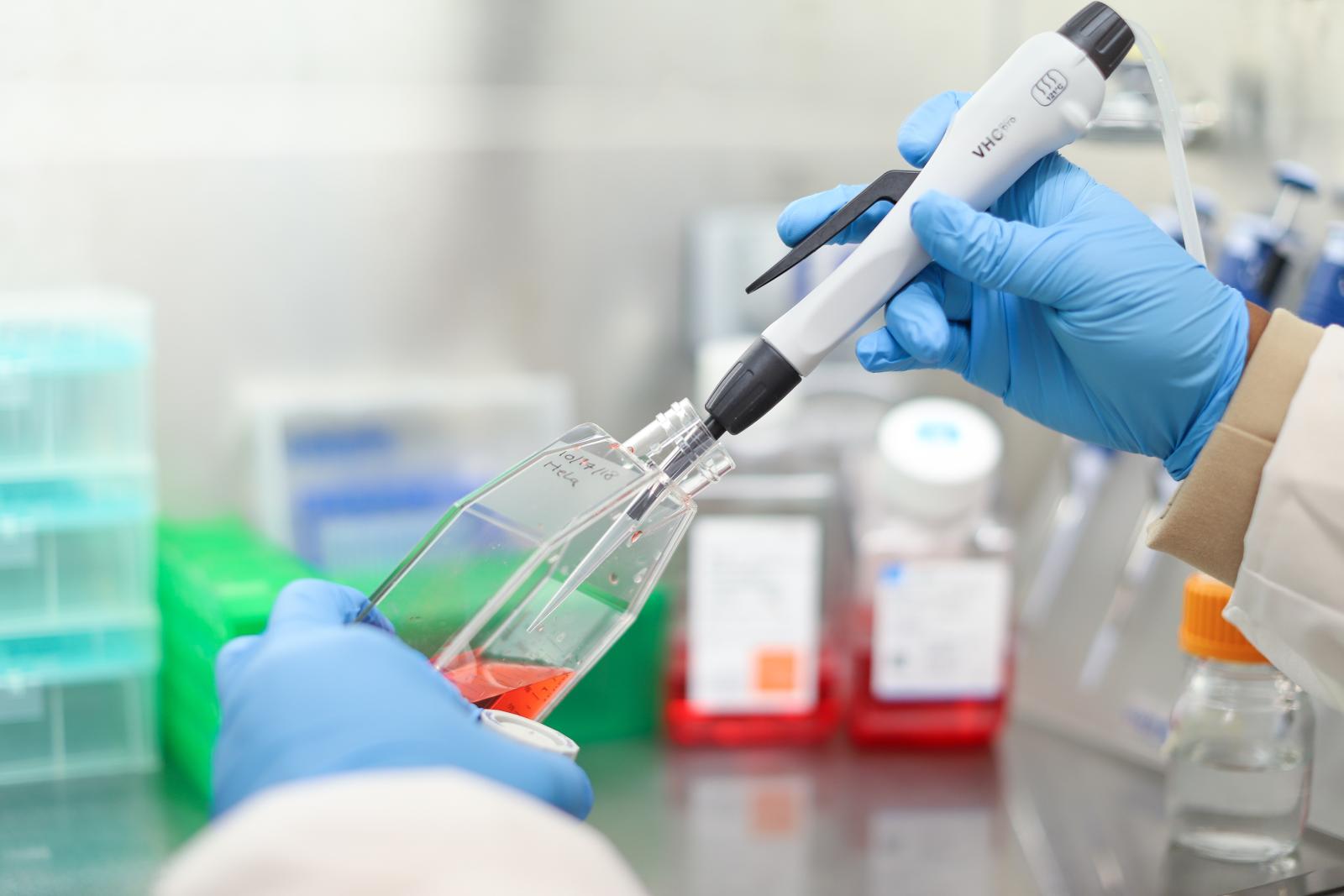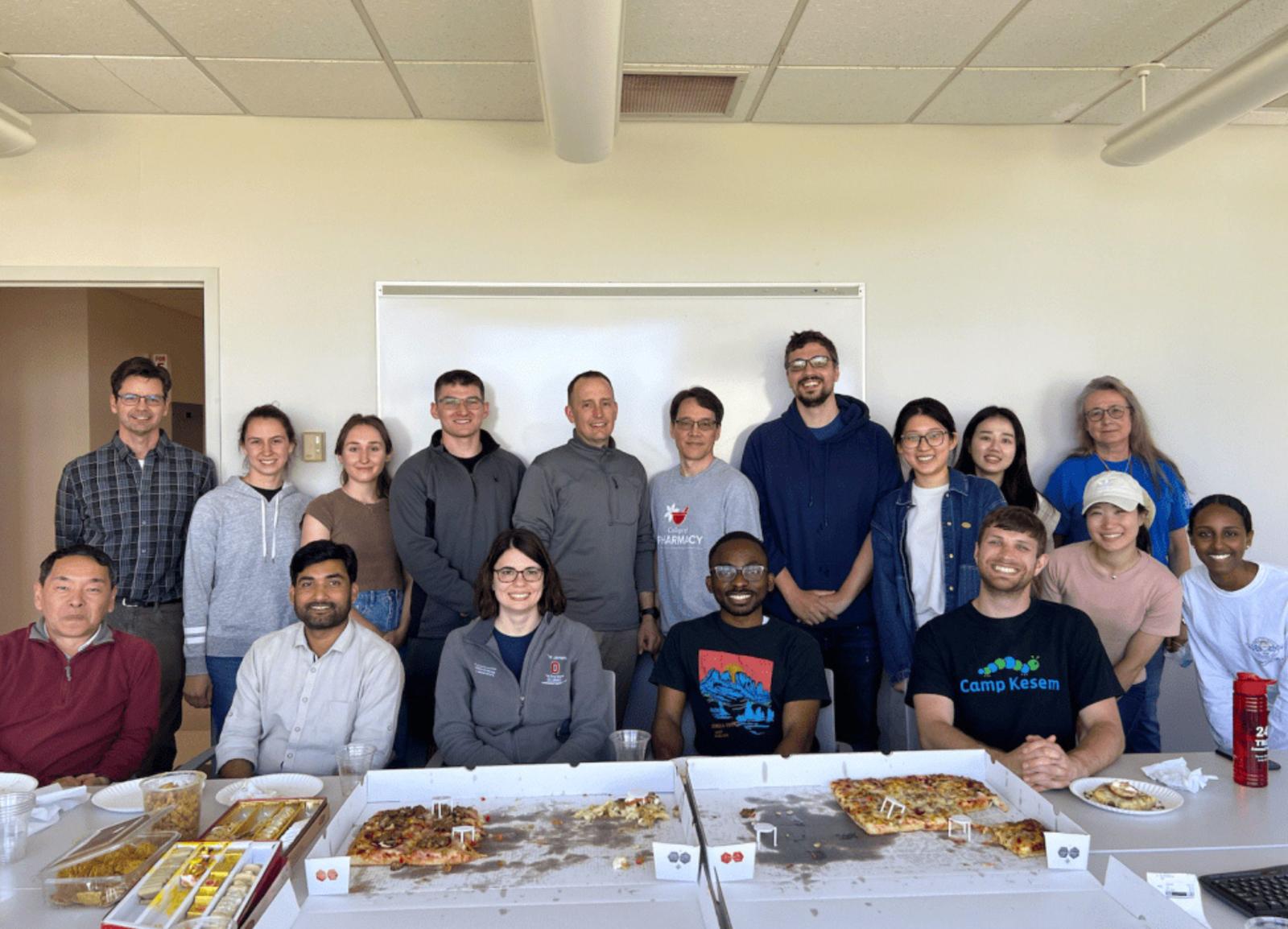Student-involved drug discovery enters clinical testing, secures commercialization partner

Researchers at The Ohio State University colleges of Pharmacy and Medicine have contributed to the successful development of a new cancer therapy molecule, HOSU-53 (JBZ-001), that will soon be evaluated in a first-in-human (FIH) clinical trial at The Ohio State University Comprehensive Cancer Center – Arthur G. James Cancer Hospital and Richard J. Solove Research Institute (OSUCCC – James).
This landmark achievement is remarkable not only for its scientific significance, but also for the unique circumstances surrounding its development. Rarely does a new chemical entity (NCE) originate and progress to clinical trial within the same academic institution.
While the development of HOSU-53 was a university-wide collaborative effort, key research supporting the compound’s ascent to clinical trial took place in the lab of Chris Coss, PhD ‘08, associate professor at the College of Pharmacy and preclinical pharmacologist at the Drug Development Institute.

Dr. Coss worked closely with Chad Bennett, PhD, and other researchers at Ohio State to explore the preclinical pharmacology of many DHODH inhibitor analogs as part of a years-long lead optimization effort.
Once the team narrowed in on HOSU-53, Dr. Coss worked extensively to characterize the preclinical pharmacology of the clinical candidate, including the design of successful IND-enabling Good Laboratory Practice toxicology studies and projecting FIH doses for initial clinical studies in patients.
Administering a DHODH inhibitor like HOSU-53 results in accumulation of a circulating biomarker of its activity that is readily measured and associated with anti-cancer activity. Accurately projecting the FIH doses by incorporating both circulating drug (pharmacokinetic data) and biomarker levels (pharmacodynamic data) requires complex data analysis and modeling and simulation to justify the clinical trial design to the U.S. Food and Drug Administration (FDA).
Recognizing the need for modelling support to further HOSU-53 development, Dr. Coss partnered with another College of Pharmacy faculty member and experienced clinical pharmacologist, Kimberly Professor of Pharmacy Mitch Phelps, PhD.
“What makes this achievement so extraordinary is that our students were able to directly contribute to successful preclinical to clinical translation right here at Ohio State.”
Dr. Phelps worked closely with Dr. Coss and the broader research team to integrate all the preclinical pharmacology data for the clinical candidate HOSU-53 into complex pharmacokinetic and pharmacodynamic models supportive of safe and effective initial doses of HOSU-53 in patients. Through these efforts, Dr. Phelps and his team were also integral to the successful regulatory filing with the FDA.
“This kind of research is typically conducted in an industrial setting, where resources and expertise are abundant,” Dr. Coss said. “While our trainees regularly gain hands-on experience in drug development from discovery to clinical trials, what makes this achievement so extraordinary is that our students were able to directly contribute to successful preclinical to clinical translation right here at Ohio State.”
As HOSU-53 moves into clinical trials at the OSUCCC – James, the work done by the College of Pharmacy demonstrates the practical outcomes of academic research. Importantly, Drs. Coss and Phelps and their lab members will remain actively engaged in the successful conduct of the clinical trial.
“We were able to generate all of the data we needed to gain confidence this drug is safe to deliver to patients, an essential step in advancing cancer treatment,” Dr. Coss said. “This achievement highlights the drug development potential within academia.”
Members of the Phelps-Coss Lab, particularly Graduate Fellows Min Hai and Kyeongmin Kim, MS, and Postdoctoral Fellow Joo Young Na, PhD, provided essential support in developing HOSU-53. The involvement of various researchers ranging from students to faculty further exemplifies the integrated approach that has become a hallmark of Ohio State’s research environment.
“I am unaware of any research training environment where you can sit in the middle of an industrial drug development project and your day-to-day work results in a successful NCE Investigational New Drug (IND) filing,” Dr. Coss said. “Pharmacologists and pharmaceutical scientists in industry hope to gain this type of experience and have success moving molecules from animals into humans. We had student and postdoctoral researchers who were doing that work and learning along the way.”
While the FIH Phase 1 clinical trial for HOSU-53 in solid tumors and non-Hodgkin’s lymphoma commenced in December, the College of Pharmacy continues to champion the idea that academic institutions can lead in drug discovery and development. The success of HOSU-53 highlights the potential for academic research to transform lives.
“All of the resources used to develop HOSU-53 were either funded internally or by competitive philanthropic awards to researchers at Ohio State, and then it was pushed through the IND process and instantly licensed afterward,” Dr. Coss said. “And the first patients who are going to receive this drug are literally across the street. That’s incredibly gratifying.”
Learn more about HOSU-53 at go.osu.edu/hosu53